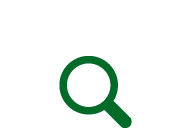Photogrammetry for aerial, satellite, UAV imagery
Raw aerial images obtained from planes, helicopters, or drones (unmanned aerial vehicles) are actually distorted images. The inherent distortions are due to aircraft pitch and roll, camera lens distortions, tilt, and topographic displacement. Distortions degrade the precision and quality of aerial images and make them impossible to be applied to mapping, especially topographic mapping.
Photogrammetry is a complex technological process of obtaining accurate and mathematically correct cartographic products, or GIS layers, form aerial images. The basic task of photogrammetry is to transform the initial aerial image(s) into 2D or 3D image(s) in a geodetic reference system.
One process, known as rectification, results in removing the tilt from rectified images. Orthorectification is a transformation that removes tilt, topographic displacement, and camera lens distortions.
Orthophotos are produced from stereoscopic pairs (and sometimes triplicates) of aerial images by block adjustment, aero-triangulation matching, and other operations. In addition to quality aerial images it requires Ground Control Points (GCP) and Digital Elevation Model (DEM). Up to date aerial cameras are often integrated with GPS/INS navigation systems. This technology reduces the number of ground control points that must be measured. The automated image matching, which is a standard digital photogrammetric process allows to extract high resolution DEMs from aerial photos. While manual editing of DEM is still required to correct correlation errors and to find additional conjugate points. The manual generation of a DEM is very time consuming.
A Digital Elevation Model (DEM) is a digital cartographic dataset of elevations in X,Y, Z coordinates which can be represented as 3D or 2D model, or as a matrix.
LiDAR offers many advantages over photogrammetric approach including resolution, accuracy, and time (but not costs). High vertical accuracy and very high horizontal density made LIDAR survey very popular — since late 2000's it became a conventional method for DEM generation.
Digital elevation models with lower resolution can be created using satellite imagery — synthetic aperture radar (SAR) data, or using optical images such as Spot, GeoEye, WorldView, and even Aster. The main task is to choose left and right images of the same area received from two locations, and often at different times, and create correlation between them. At the same time, the major satellite operators offer special stereo products. For instance, the Pleiades satellites can be programmed to collect Tri-Stereo imagery for the production of accurate 1-2 m DEMs.
In addition to photogrammetry, digital elevation models are used in many other industries, such as hydrology and flood risk assessment, glaciology, geomorphology, geohazards assessment, civil engineering, mining, archeology, etc.
Zesmill provides a wide range of services in digital photogrammetry using digital photogrammetric workstations, stereomonitors, and state-of-the-art software. Our services include:
- orthorectification
- mosaicing
- DEM and DTM generation and editing
- relief counter mapping
- surface 2D and 3D modeling
- LiDAR data processing
- change detection for landlside, rock fall and rock slide areas, open-pit walls, river banks etc.
- measuring of glacier movements, landslide movements, surface subsidence in mining regions
- imagery processing for aerial surveillance of overhead power lines
- measuring of tree height of forest stands, vertical and horizontal structures and other forestry applications.
Zesmill’s photogrammetric department also provides outsourcing services for aerial imaging companies utilizing both airborne mapping camera and UAV (drone) technologies. We offer a wide range of photogrammetric operations at reasonable price starting at 3.5 EUR/sq.km including mosaicing, aerial triangulation, digital orthorectification, relief contour generation, DEM generation and verification, satellite photogrammetry, topographic mapping.








